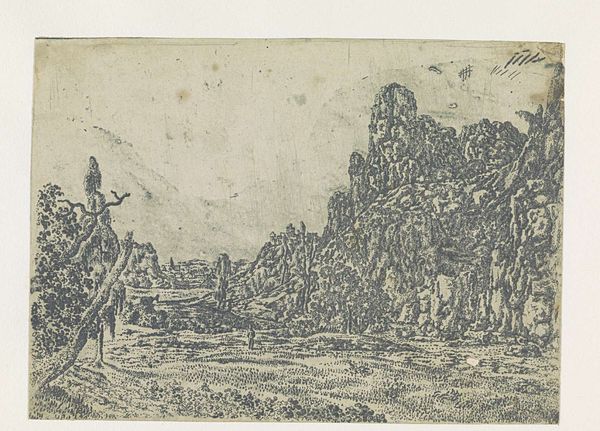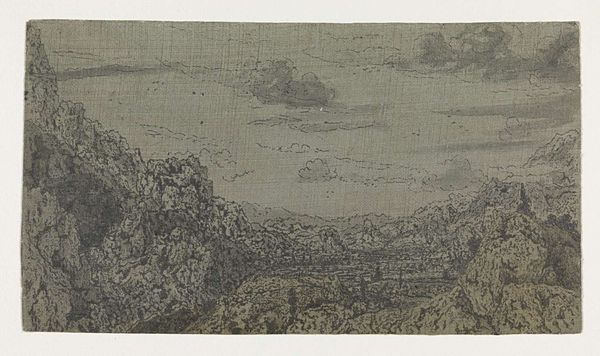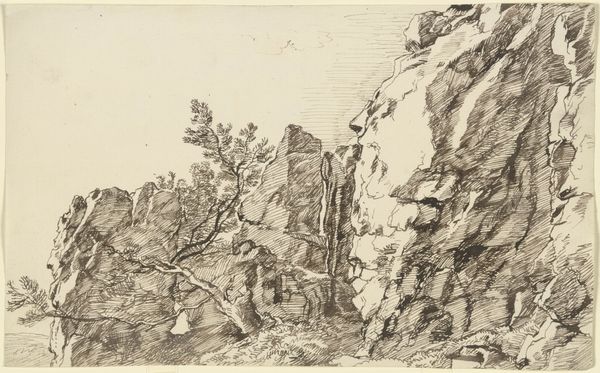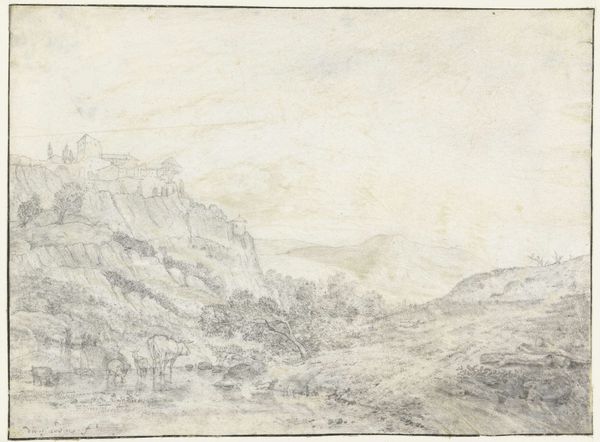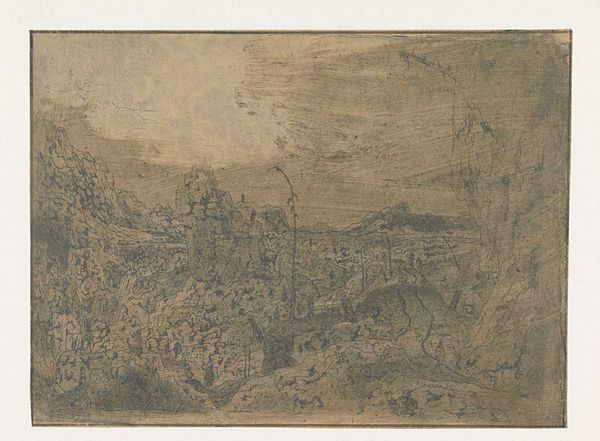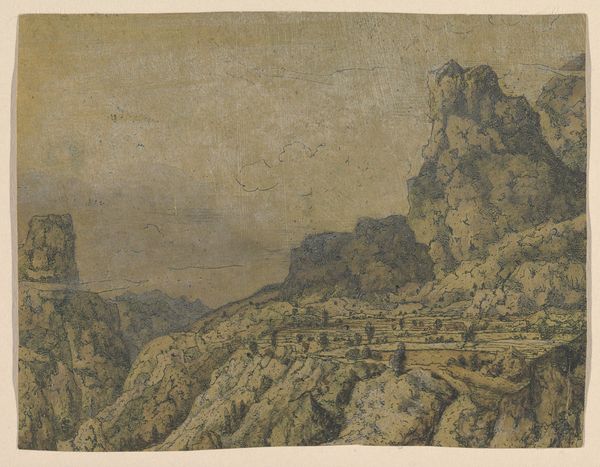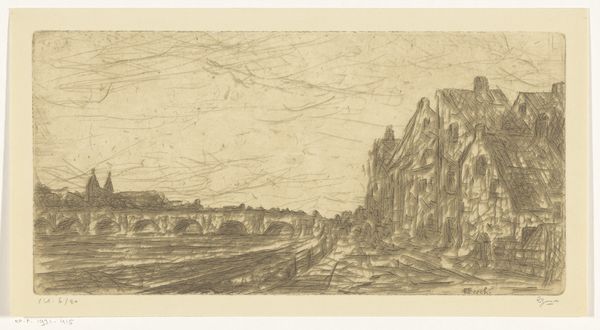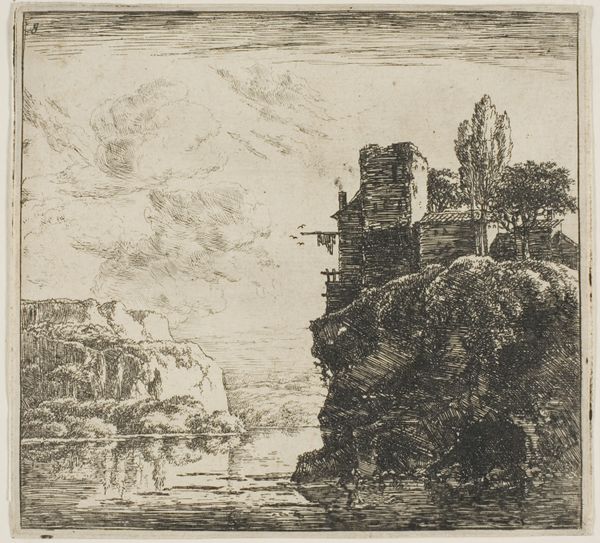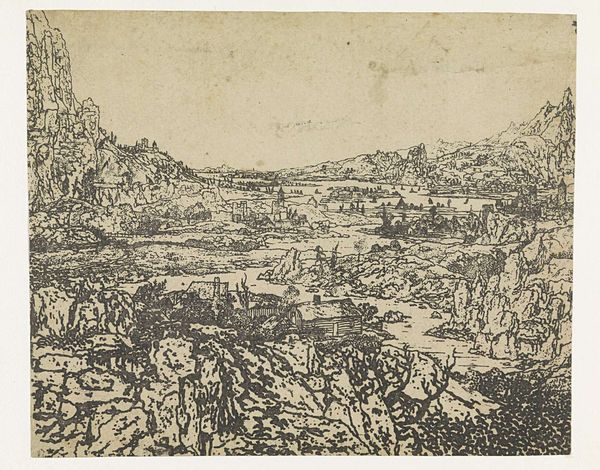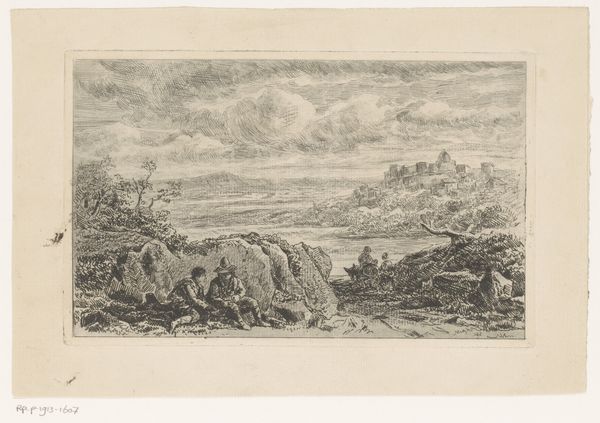
print, etching
#
baroque
# print
#
etching
#
landscape
#
cityscape
Dimensions: height 93 mm, width 130 mm
Copyright: Rijks Museum: Open Domain
Curator: It’s rather imposing, isn't it? Somber even. I think that huge rock feature in Hercules Segers's "Landscape with a Steep Cliff, Small Version," from around 1622-1625, really sets a heavy mood. Editor: Indeed. It is visually arresting, with that cliff dominating the composition. Notice how Segers uses the etching technique to create such a varied texture and tonality across the rock face, almost overwhelming the tiny cityscape nestled behind. Curator: The choice of perspective is fascinating. This print comes to us from a tumultuous time in the Netherlands, steeped in conflict, and landscapes gained increasing social and political significance. Perhaps the artist felt compelled to portray the enduring power of the land against societal instabilities. Editor: I appreciate that socio-historical perspective. However, I'm drawn to how Segers exploits the linear qualities of etching to define every crevice and plane. The rugged texture provides almost a tactile quality; one can imagine the coarse, cold touch of that cliff face. Curator: While Segers' innovative use of printing techniques is undeniable, it’s also remarkable how these landscape prints changed the cultural landscape. Making views accessible encouraged a sense of national identity. Editor: Perhaps. Although one can simply get lost within Segers' manipulation of space and depth, note his remarkable atmospheric rendering; as such, the interplay between the dominating foreground cliff and soft distant background hints at immeasurable spatial recession, a sheer aesthetic brilliance independent of historical context. Curator: But those cultural readings surely add depth. The cityscape at the base reminds us how daily life unfolds, perhaps invisibly so in the shadow of grand landscapes. Editor: Perhaps the true beauty rests on the viewer allowing for both responses to coexist. Thank you. Curator: A point well made.
Comments
rijksmuseum about 2 years ago
⋮
For this impression the plate was reworked, but then in the usual etching technique. By means of scratchy line patterns, Segers lent the rocks their characteristic structure.
Join the conversation
Join millions of artists and users on Artera today and experience the ultimate creative platform.
rijksmuseum about 2 years ago
⋮
Using another impression of the adjacent etching (RP-P-1910-2012), Segers made a counterproof: while the ink was still wet he printed it on another sheet of paper prepared with a bluish grey ground. The counterproof is the reverse image of the etching.
